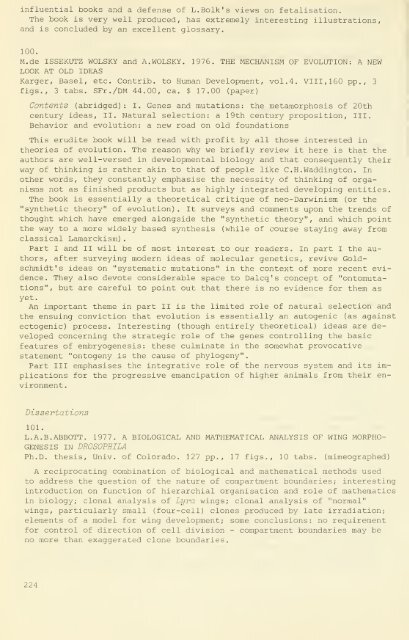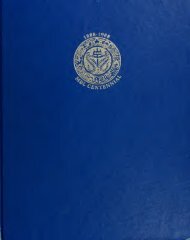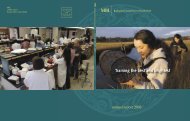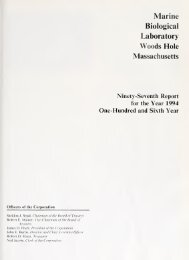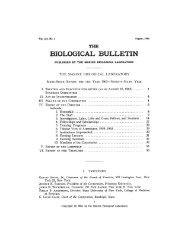General embryological information service - HPS Repository
General embryological information service - HPS Repository
General embryological information service - HPS Repository
You also want an ePaper? Increase the reach of your titles
YUMPU automatically turns print PDFs into web optimized ePapers that Google loves.
influential books and a defense of L.Bolk's views on fetalisation.<br />
The book is very well produced, has extremely interesting illustrations,<br />
and is concluded by an excellent glossary,<br />
100.<br />
M.de ISSEKUTZ WOLSKY and A.WOLSKY. 1976. THE MECHANISM OF EVOLUTION: A NEW<br />
LOOK AT OLD IDEAS<br />
Karger, Basel, etc. Contrib. to Human Development, vol.4. VIII, 160 pp., 3<br />
figs., 3 tabs. SFr./DM 44.00, ca. $ 17.00 (paper)<br />
Contents (abridged): I. Genes and mutations: the metamorphosis of 20th<br />
century ideas, II. Natural selection: a 19th century proposition. III.<br />
Behavior and evolution: a new road on old foundations<br />
This erudite book will be read with profit by all those interested in<br />
theories of evolution. The reason why we briefly review it here is that the<br />
authors are well-versed in developmental biology and that consequently their<br />
way of thinking is rather akin to that of people like C.H.Waddington. In<br />
other words, they constantly emphasise the necessity of thinking of organisms<br />
not as finished products but as highly integrated developing entities.<br />
The book is essentially a theoretical critique of neo-Darwinism (or the<br />
"synthetic theory" of evolution) . It surveys and comments upon the trends of<br />
thought which have emerged alongside the "synthetic theory", and which point<br />
the way to a more widely based synthesis (while of course staying away from<br />
classical Lamarckism)<br />
.<br />
Part I and II will be of most interest to our readers. In part I the authors,<br />
after surveying modern ideas of molecular genetics, revive Goldschmidt's<br />
ideas on "systematic mutations" in the context of more recent evidence.<br />
They also devote considerable space to Dalcq's concept of "ontomutations",<br />
but are careful to point out that there is no evidence for them as<br />
yet.<br />
An important theme in part II is the limited role of natural selection and<br />
the ensuing conviction that evolution is essentially an autogenic (as against<br />
ectogenic) process. Interesting (though entirely theoretical) ideas are developed<br />
concerning the strategic role of the genes controlling the basic<br />
features of embryogenesis : these culminate in the somewhat provocative<br />
statement "ontogeny is the cause of phylogeny".<br />
Part III emphasises the integrative role of the nervous system and its implications<br />
for the progressive emancipation of higher animals from their environment.<br />
Dissertations<br />
101.<br />
L. A. B.ABBOTT. 1977. A BIOLOGICAL AND MATHEMATICAL ANALYSIS OF WING MORPHO-<br />
GENESIS IN DROSOPHILA<br />
Ph.D. thesis, Univ. of Colorado. 127 pp., 17 figs., 10 tabs, (mimeographed)<br />
A reciprocating combination of biological and mathematical methods used<br />
to address the question of the nature of compartment boundaries; interesting<br />
introduction on function of hierarchial organisation and role of mathematics<br />
in biology; clonal analysis of Lyra wings; clonal analysis of "normal"<br />
wings, particularly small (four-cell) clones produced by late irradiation;<br />
elements of a model for wing development; some conclusions: no requirement<br />
for control of direction of cell division - compartment boundaries may be<br />
no more than exaggerated clone boundaries.<br />
224


